History of the Fargo Water Works System
Fargo's Water Treatment Plant is a 30-million gallon per day (MGD) facility expandable to 45 MGD. Construction of the plant began in May 1994 and was completed in late 1996. The plant was built immediately south of the old water treatment plant on 13th Avenue South and 5th Street. The space where the old water plant was located will be used for future expansion of the new plant to 45 MGD when necessary to serve the future demand for water. The total project cost was approximately $66 million and was funded by water revenues, a 10-year local sales tax of 1/4 cents, and a Municipal, Rural and Industrial Grant.
Report from 1910-1912
The early days of water use in Fargo can best be described by the city engineer's report of 1910-12, which states: "Originally water was used from the Red River for all purposes. It was hauled about the city and sold as a commodity. At a later date, about 1879, a pumping station was installed at 4th Street South, on the bank of the river, and water supplied through water mains laid under a franchise by a private water company. This source of supply and method of distribution was satisfactory until the water shed had become settled and the river became contaminated by the runoff from sewage from the growing cities situated on the river above the city. There were objectionable features of the water for a domestic supply. In the early 1890's, a number of artesian wells were put down in the western part of the city. These wells produced a good supply of water but it was exceedingly hard and considerable discussion was carried on from time to time as to the desirability of using water carrying a large amount of solids in solution.
"The City of Fargo purchased the water system from the Fargo Water & Steam Company on September 23, 1890. The city's supply at that time was taken from the river, settled and delivered into the distribution system. During the years of 1890 to 1910, investigations were conducted as to various other possible sources of supply. Several test wells were drilled in various parts of the city, but the water was very hard and unsuitable for domestic use."
1912: The old treatment plant and pumping station were designed and constructed in 1910-1912, and put into operation on June 13, 1912. The filter plant was designed and built to treat 6 million gallons per day (MGD), but equipment was installed to handle only 4 MGD.
1923: A New intake line from the river was installed. Plant capacity increased to 6 MGD.
1926: Settling basins and clearwells doubled in size. Provisions were made to add four more rapid sand filters.
1934: Four rapid sand filters were added. Plant capacity increased to 10 MGD. Dry chemical feed machines replaced old chemical mixing vats. By 1933, the plant had been converted to electrical power. Use of the original steam-driven pumping plant was discontinued.
1946: The demand for water by this time had reached a point where the capacity of the plant was often overtaxed. A study indicated an immediate increase to 15 MGD was needed.
1951: Plant capacity increased to 15 MGD. Three new treatment units called "suspended slurry contact basins" were constructed.
1955: A new raw water intake and submersible pump were installed. A 20" in diameter discharge line was installed to the pre-chlorine contact basin. This brought the capacity of the raw water intake supply to 15.5 MGD. The old outmoded electrical switchgear was replaced with new modern dead-front cabinet enclosed switches and contacts.
1960: Chlorine equipment was installed to handle one-ton containers of chlorine.
1963: A Carball Unit was installed for the production of carbon dioxide gas.
1967: Bulk lime handling equipment was installed. A 6.25 MGD finished water reservoir was constructed. A 5 MGD pump with a gasoline engine was installed for emergency backup pumping.
1972–1974: Plant capacity increased to 22 MGD. All low and high service pumps were replaced to meet the new capacity. Two new suspended slurry contact basins were added. Ten old rapid sand filters were converted to mixed media filters, doubling their capacity. Sludge handling facilities were added that consisted of a thickner, vacuum drum driers and a clarifier. A pump station on the Sheyenne River for emergency auxiliary supply was constructed.
1984: A nine-mile long, 30" in diameter pipe line from the Sheyenne River pumping station to the water plant was constructed.
1989: A study of the water plant by Ulteig Engineers and Black & Veatch recommended an increase in capacity to 30 MGD and the construction of a new water plant because of the age of the plant and the inadequacies of the treatment processes to meet federal regulations.
1994–1997: Construction of the new water plant begins. Some important features of the new water plant are a pre-treatment facility, two-stage lime softening, ozone disinfection, mixed media filters, new high service pump station, new raw water intake and pump station. Equipment in the sludge handling facility was replaced and the old water plant was demolished.

